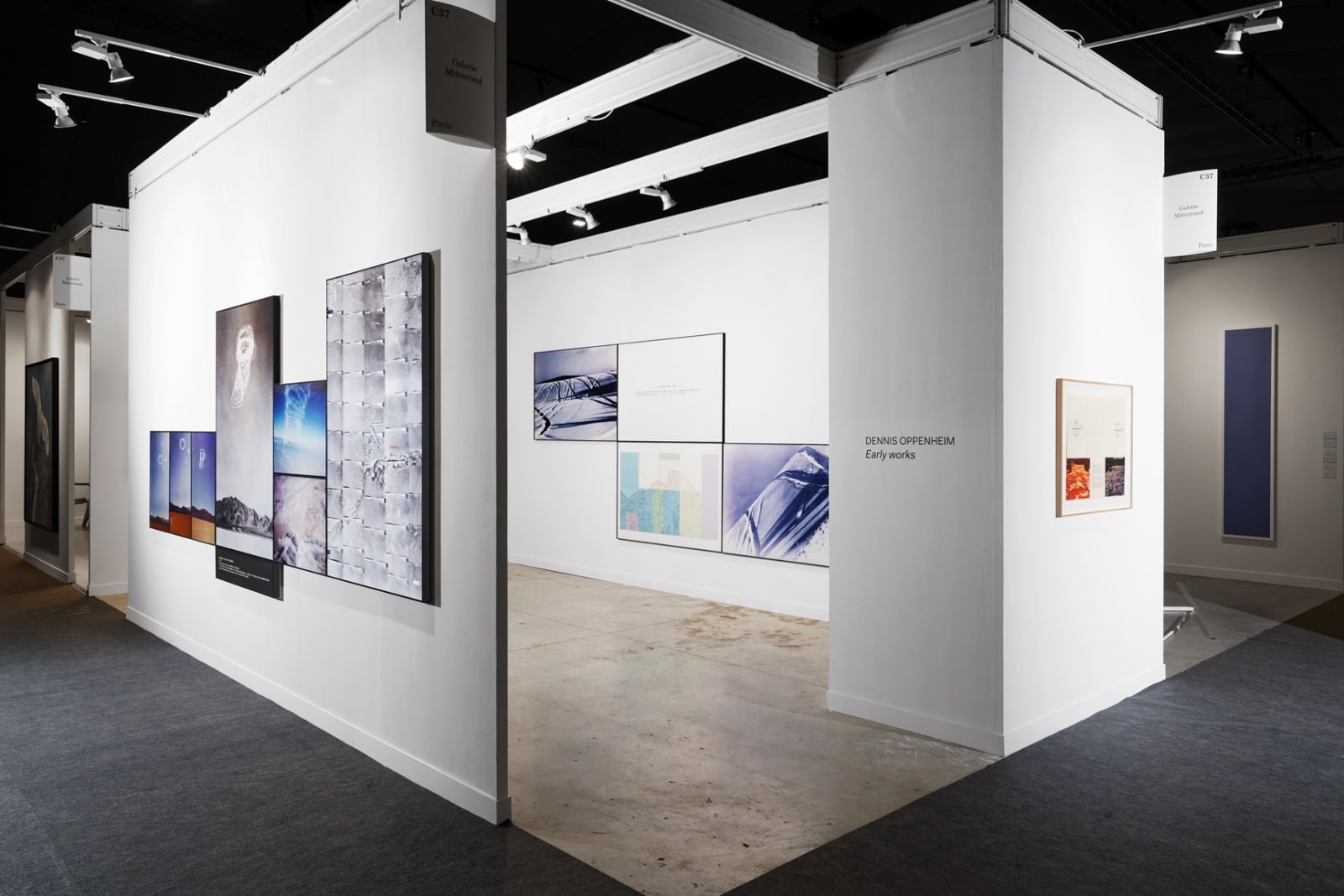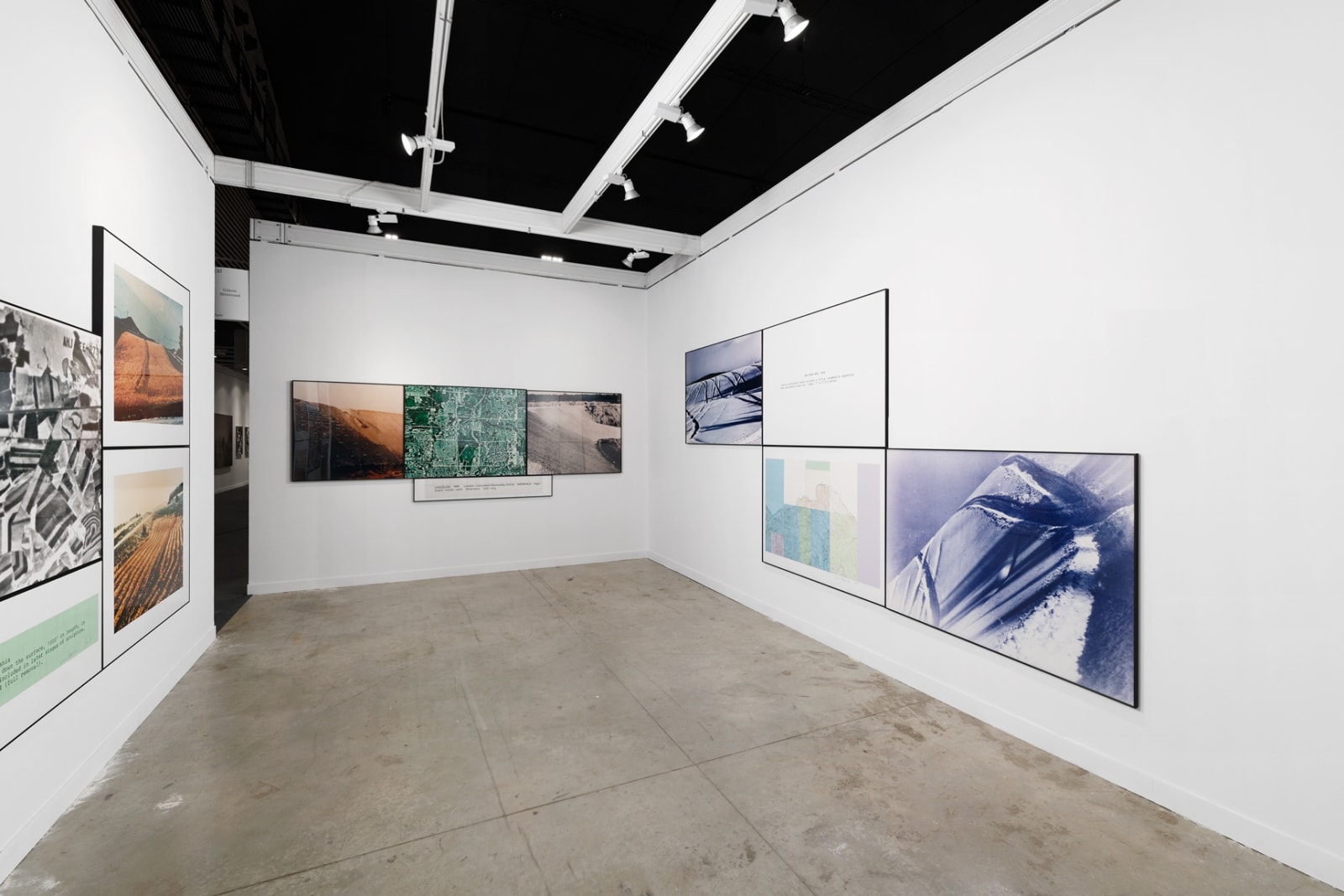FIAC 2021
Galerie Mitterrand is pleased to announce its participation in FIAC 2021, October 21-24, VIP preview on October 20. Join us on booth C37 !
On this occasion, the gallery is presenting a rare groupe of early works by the late American artist Dennis Oppenheim. His transversal oeuvre is characterized by a multitude of approaches ranging from Land Art to Body Art and includes practices like video, sculpture, installation and even photography. A pioneer of Earth art, alongside Robert Smithson, Walter De Maria, Michael Heizer, Christo and Jeanne-Claude, Dennis Oppenheim sought to situate his works in a natural environment by integrating the particularities of the landscape. Earth art originated in the United States in the 1960s. Works associated with the movement would later be grouped under the more generic term Land Art. The artists of the Earth art movement voluntarily positioned their works away from institutional venues and channels by favouring the production of in-situ pieces. Dennis Oppenheim stood out for his conceptual approach, integrating an explicitly social and political dimension.
From the start of his career, in order to keep a record of his interventions, Dennis Oppenheim used photography and or film, that became works in their own right. Galerie Mitterrand choose to focus on these series of photographs documenting durable or ephemeral, Earth art works are most often physically inaccessible to the public. These testimonies (photographs, videos, drawings or speeches) are necessary for them to exist and be disseminated.
Whirlpool-Eye of the Storm is a series of seven photographs documenting a project carried out in the summer of 1973 in the El Mirage (Dry) Lake in the Mojave Desert in California, during which an airplane drew a spiral of white smoke in the sky
One Hour Run, 1968, is a performance piece in which Dennis Oppenheim created a six-mile, continuous path of snowmobile tracks in St. Francis, Maine.
Directed Harvest, 1969, is the documentation of an action that the artist undertook in a Pennsylvania wheat field. The landscape is altered by the action of harvester progressively cutting and removing the ripe wheat, enacting a form of progressive, impermanent carving on the land.
For Landslide, 1968, Oppenheim inserted right-angled, wooden boards into a heap of dirt by the Long Island Expressway to create a 1,000-foot-long stream of orderly marks.
Dennis Oppenheim was born in Electric City in 1938 ; he died in New York in 2011. In recent years, his work was exhibited at the Art Institute of Chicago in 2016, MAMCO Geneva in 2015 and the Musée d’Art Moderne et Contemporain in Saint-Etienne in 2011. He has produced over fifty works in public spaces all around the world and is including in prestigious institutional collections such as MoMA in New York, the Whitney Museum of American Art, LACMA in Los Angeles, Tate Gallery in London, Centro de Arte Reina Sofia in Madrid, the Stedjelik Museum in Amsterdam, MAMCO in Geneva, Hamburger Kunsthalle and the Musée d’Art Moderne et Contemporain in Saint-Etienne.




